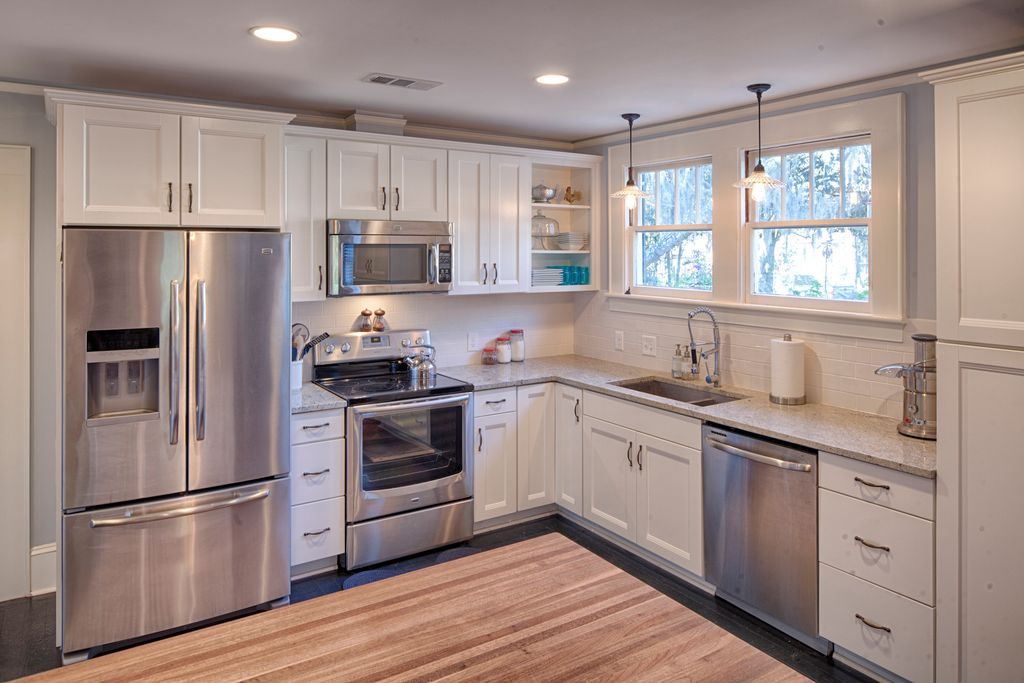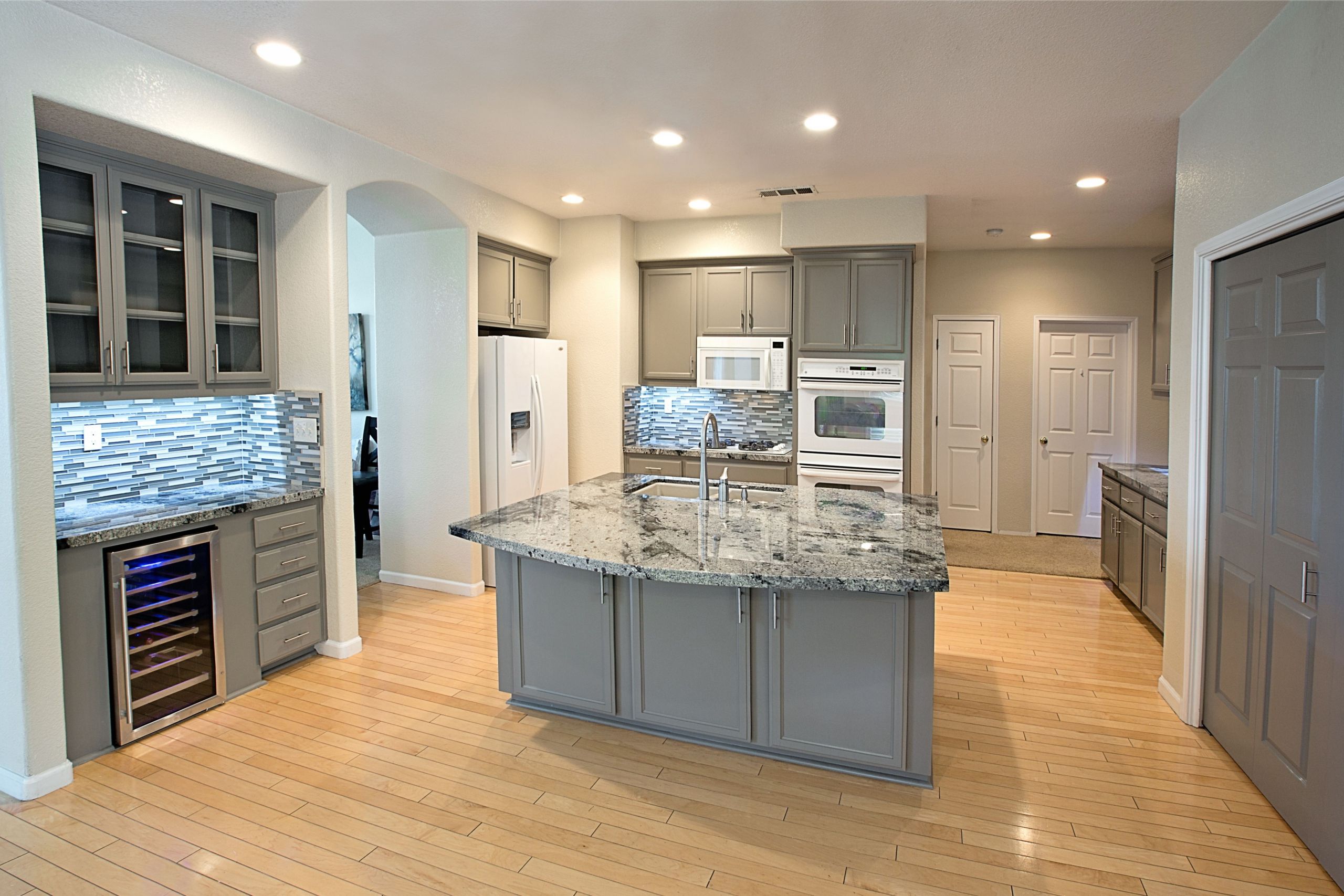

- Recessed lighting layout for small l shaped kitchen plus#
- Recessed lighting layout for small l shaped kitchen free#
When it comes to the design of U-shaped kitchens, there are some things to keep in mind. The classic layouts of galley, L- and U-shapes are designed to be the most ergonomically sound, helping to create the ‘work triangle’ of hob, sink and fridge within easy distance of each other and allowing for adequate work space in between.Īnd while we have swapped compact kitchens for open plan living, it is interesting to see how these shapes have found new relevance in a larger space. Kitchen trends come and go, but planning a layout essentially remains the same. There are U-shaped kitchens, L-shaped kitchens, galley kitchens and more – but what shape is best? The truth is, it's down to whatever suits your lifestyle. 'Where there are only two walls to work against, you can still achieve a U-shape by making the third side a peninsula unit,' adds Jamee Kong of DesignSpaceLondon.
Recessed lighting layout for small l shaped kitchen plus#
Modern variants include the U-shape plus island combo, which sees an island bridging the middle of a large U-shape, as well as standalone U-shape islands that sit in the middle of an open-plan room.
Recessed lighting layout for small l shaped kitchen free#
U-shaped kitchens traditionally have units running along three walls of the room with one free wall as the access point. This monochrome combination is a tried-and-tested winner. If your kitchen is on the smaller side, then limit your color palette, for a neat, tidy and steamlined aesthetic. However, recessed lights need to be spaced out across the ceiling and set a few inches back from the front edge of countertops to avoid casting a shadow.Opting for a U-shape in a medium-sized kitchen maximises floor space and keeps the outlook open. Flush or semi-flush fittings will usually sit over the kitchen island, or in the center of the ceiling if you don't have one. Where you position ambient lighting will depend on the light fitting you have chosen. Position the light one to two inches from the back of a shelf to create a backlit effect. 'Make sure you position spotlights or pendants directly above key areas to ensure the light isn't blocked when you stand at the sink, hob or worktop,' explains Melissa Klink, Head of Design at Harvey Jones.Īccent lighting should be installed around any decor or architectural details you'd like to accentuate. This means that it needs to be positioned to hit the back/center part of the countertop, so that when you are bending or leaning forwards over it – perhaps chopping, mixing or stirring – your shadow is not cast over what you are prepping, but just in front of it, meaning that it is illuminated perfectly. Task lighting needs to cast light over a countertop, unimpeded. Think about the purpose the light is serving when choosing where to position it in a kitchen. (Image credit: Life Kitchens) Where should kitchen lights be placed? 'If you plan your kitchen with various forms of lighting all around, it will be bright enough to work in.' 'If you have one light, then you need it to be as bright as possible, but again, dimmable,' explains Niki Wright, lighting design expert and founder of Lights & Lamps.

Happily, a good lighting designer – or experienced interior designer or builder – will be able to advise you on what you need. Bulbs deliver a certain number of lumens, so you can work out how many bulbs you need by dividing the number of lumens by the number of lumens each bulb delivers. So if your kitchen is 100 square feet, which will need between 10 and 20 foot-candles, you will need 1,000 to 2,000 lumens.

To work this out, multiply the kitchen floor area in square feet by the foot-candle (light intensity) needed. How bright your kitchen lights need to be will depend on what you are using your kitchen for and how many lights you have. To calculate how much light your kitchen needs, you need to talk in terms of lumens. (Image credit: Davide Lovatti/Future PLC) How do you calculate kitchen lighting?


 0 kommentar(er)
0 kommentar(er)
